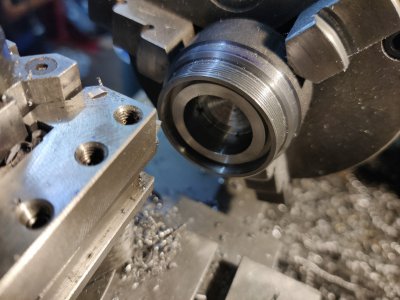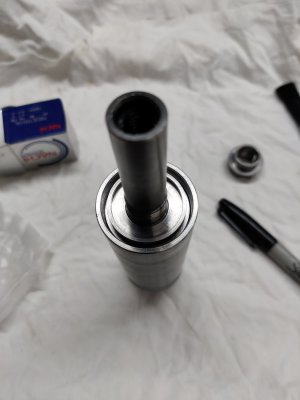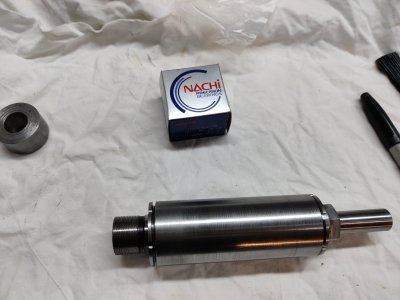This, to me, sounds like an extraordinary claim.A bearing should never be spun without a load on it, the rolling elements can skid and damage the race surfaces, no I have never done that with the Kluber greases.
Where did this idea come from? I never heard about bearings requiring a minimal load. And getting damaged because of no load being spun by hand? No way. Perhaps if one tried to spin one up to very high speed with compressed air, but not by hand.
Both the rolling elements and the races are hardened steel designed to withstand much higher loads placed on the bearing during use. There is rolling and sliding of surfaces under much higher loads than those ever attainable by spinning a bearing it in one's hand...
What if the installed bearing runs an extremely low load? Let's say a very light, air driven plastic shaft with just a mirror that weights few grams at most. Will the bearing get damaged too?
I see. Thank you for mentioning it. rrently using an iso vg 10 oil and it is just barely ok. I think iso 15 will cause too much drag, but now knowing the viscosity of the base oil for this grease I can test with oil instead of buying an expensive grease and finding it doesn't work. Is there grease that uses iso 10 base oil? Or even less?The drag from the lubricant comes from it’s viscosity, and the amount of lubricant in the bearing, NBU15 is an ISO 15 grease, so very low viscosity and should have
Thank you for the link. They have a chapter on calculating the frictional moment at page 14. They only provide numbers for oil bath lubrication. Regarding greases they provide this very confusing statement:That is meant for high speed applications and to determine if it would be suitable for long life in your application, you would need to run the calculations. This document from FAG runs you though the calculations the application engineers do and if you have a good grasp of the loads on the bearing, you should be able to fairly accurately determine what viscosity is suitable.
The f0 values of freshly greased bearings resemble, in the starting phase, those of bearings with oil bath lubrication. After the grease is distributed within the bearing, half the f0 value from the table
(fig. 16) has to be assumed. Then it is as low as that obtained with oil throwaway lubrication. If the bearing is lubricated with a grease which is appropriate for the application, the frictional moment M0 is obtained mainly from the internal frictional resistance of the base oil.
There are no values given for the "oil throwaway lubrication" and there is no definition of it. Oil bath is defined as level of oil that reaches half the lowest rolling element. One can perhaps infer "oil throwaway lubrication" is basically some oil in the bearing, but no oil level and that type of lubrication is half that of oil bath (at the same viscosity).
Furthermore, they claim grease lubrication will provide half of the drag of an oil bath (providing the viscosities of the bath and grease base oil are the same). This is very interesting. On one hand it claims oil bath (only reaching half way the height of the lowest ball) will be double the drag of my bearings now (as they are used with oil throwaway lubrication). On the other if I can find or make a grease with base oil with iso vg 10 viscosity it should have exactly the same drag as it does now.
Shielded bearings are not as good as sealed, but they will work fairly well at keeping contaminates out provided it is not a harsh environment.
Unfortunately, It is a harsh environment with grinding dust and coolant everywhere...







